Southern blotting is a molecular biology technique used to detect specific DNA sequences in a sample. It is named after its inventor, Edwin Southern. This technique is particularly useful for studying the presence, size, and abundance of specific DNA fragments, such as those produced by restriction enzyme digestion, DNA hybridization, or polymerase chain reaction (PCR).
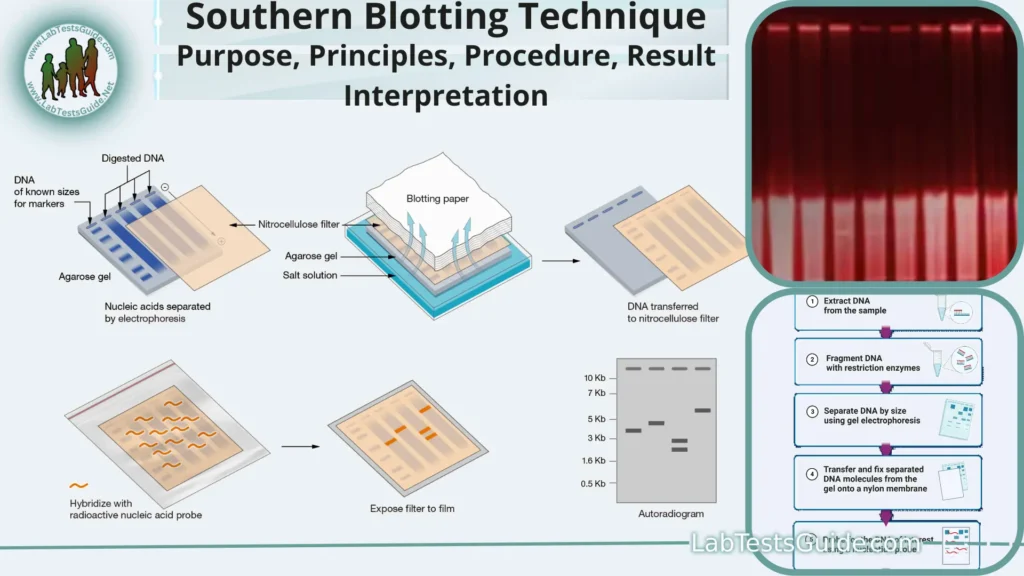
Key points of Southern Blotting:
- Named After Inventor: Southern blotting is named after its inventor, Edwin Southern, who developed the technique in the 1970s.
- DNA Detection: It is a laboratory technique used to detect specific DNA sequences in a DNA sample.
- DNA Digestion: Genomic DNA is isolated from a sample and digested using restriction enzymes.
- Gel Electrophoresis: The digested DNA fragments are separated by size using gel electrophoresis.
- Size Separation: Smaller DNA fragments migrate faster through the gel, while larger ones move more slowly.
- Denaturation: After electrophoresis, the DNA fragments are denatured to single-stranded form.
- Blotting: Denatured DNA is transferred (blotted) onto a solid support like nitrocellulose or nylon membrane.
- Hybridization: The DNA on the membrane is then hybridized with a labeled probe that is complementary to the target DNA sequence.
- Probe Labeling: Probes are labeled with radioactive or fluorescent markers for easy detection.
- Washing: After hybridization, the membrane is washed to remove unbound or nonspecifically bound probe molecules.
- Specific Binding: The labeled probe that has hybridized with the target DNA sequence remains bound to the membrane.
- Visualization: The presence and location of specific DNA fragments are visualized using X-ray film or a fluorescent imager.
- Applications: Southern blotting is used for gene mapping, DNA fingerprinting, mutation detection, and more.
- Low Throughput: It is a relatively low-throughput technique, making it less suitable for analyzing a large number of samples.
- Time-Consuming: Southern blotting can be time-consuming compared to modern molecular biology techniques.
- Alternatives: While still valuable, Southern blotting has been largely replaced by more sensitive and high-throughput methods like PCR and next-generation sequencing in many applications.
Defination of Southern Blotting:
Southern blotting is a laboratory technique used to detect specific DNA sequences in a sample by transferring and identifying them on a solid support, typically a membrane, after they have been separated by size through gel electrophoresis and hybridized with a complementary labeled probe. This method is particularly valuable for gene mapping, DNA fingerprinting, and mutation analysis.
Background and Significance:
Background:
- Inventor: Southern blotting is named after its inventor, Edwin Southern, who developed the technique in the 1970s.
- DNA Structure: At the time of its development, our understanding of DNA structure and genetics was expanding rapidly. However, tools for analyzing DNA were limited.
- Enzyme Cutting: Restriction enzymes, which cut DNA at specific sequences, were newly discovered and provided a method for fragmenting DNA.
- Need for DNA Analysis: Researchers needed a method to analyze and study specific DNA sequences in a complex genomic context.
Significance:
- DNA Detection: Southern blotting allowed scientists to detect and isolate specific DNA sequences from a complex mixture of DNA fragments.
- Gene Mapping: It played a pivotal role in gene mapping, helping identify the location of genes on chromosomes.
- DNA Fingerprinting: Southern blotting is a foundational technique for DNA fingerprinting, which is used in forensics and paternity testing.
- Mutation Analysis: It’s essential for detecting mutations and genetic variations associated with diseases.
- Molecular Biology: Southern blotting laid the foundation for many subsequent molecular biology techniques, including Northern blotting and Western blotting.
- Historical Impact: It was a groundbreaking development in molecular biology, revolutionizing the field and expanding our ability to study DNA.
- Modern Research: While newer techniques like PCR and next-generation sequencing have largely replaced Southern blotting in some applications, it still remains relevant in certain research and diagnostic contexts.
Purpose of Southern Blotting:
The primary purpose of Southern blotting is to detect and analyze specific DNA sequences within a complex mixture of DNA. Here are the key purposes of Southern blotting:
- Identifying Target DNA Sequences: Southern blotting is used to locate and identify the presence or absence of specific DNA sequences in a given DNA sample. This is particularly useful when studying genes, gene mutations, or other DNA elements of interest.
- Quantifying DNA: It allows for the estimation of the quantity of a specific DNA sequence in a sample. This is important for assessing the abundance of a particular gene or DNA fragment.
- Gene Mapping: Southern blotting is a critical tool in genetic research and gene mapping. By analyzing the pattern of DNA fragments on the blot, researchers can determine the location of genes on chromosomes.
- Mutation Detection: It is used to identify mutations or genetic variations within specific genes. This is essential for understanding the genetic basis of diseases and disorders.
- DNA Fingerprinting: Southern blotting is an integral part of DNA fingerprinting techniques used in forensic science, where it helps distinguish individuals based on their unique DNA profiles.
- Quality Control: In molecular biology and genetics research, Southern blotting can be used for quality control to verify the integrity and identity of DNA samples.
- Diagnostic Applications: It is employed in medical diagnostics to detect specific genetic markers associated with diseases or conditions. For example, it can be used to diagnose genetic disorders.
- Comparative Analysis: Southern blotting allows for the comparison of DNA samples from different individuals or species, helping researchers understand genetic similarities and differences.
- Historical DNA Analysis: In fields such as archaeology and anthropology, Southern blotting has been used to analyze ancient DNA samples, providing insights into human evolution and migration.
Applications of Southern Blotting:
Southern blotting is a versatile molecular biology technique with various applications. Here are some of the key applications of Southern blotting:
- Gene Mapping: Southern blotting is crucial for mapping the location of specific genes on chromosomes. By analyzing the pattern of DNA fragments in a Southern blot, researchers can determine the presence and location of particular genes within an organism’s genome.
- Mutation Detection: It is used to identify mutations or genetic variations within specific genes. This is essential for understanding the genetic basis of diseases and disorders.
- DNA Fingerprinting: Southern blotting is a foundational technique for DNA fingerprinting, which is used in forensic science to distinguish individuals based on their unique DNA profiles. It has applications in criminal investigations and paternity testing.
- Genetic Diagnostics: Southern blotting is employed in medical diagnostics to detect specific genetic markers associated with diseases or conditions. For example, it can be used to diagnose genetic disorders like sickle cell anemia.
- Quality Control: In molecular biology and genetics research, Southern blotting can be used for quality control to verify the integrity and identity of DNA samples, ensuring that the correct DNA is being used in experiments.
- Comparative Genomics: Researchers use Southern blotting to compare DNA samples from different individuals, species, or strains. This helps in understanding genetic similarities and differences and can be valuable in evolutionary studies.
- Analysis of Transgenic Organisms: Southern blotting can be used to confirm the integration of transgenes (foreign genes) into the genome of an organism, such as genetically modified crops or animals.
- Viral Detection: Southern blotting can be applied to detect and identify viral DNA or RNA in clinical samples, aiding in the diagnosis of viral infections.
- Epigenetic Studies: Researchers can use Southern blotting in epigenetic studies to investigate DNA methylation patterns, which can play a role in gene regulation and disease development.
- Archaeology and Anthropology: Southern blotting has been used to analyze ancient DNA samples from archaeological and anthropological remains, providing insights into human evolution, migration, and population genetics.
- Environmental DNA Analysis: It can be employed to detect specific DNA sequences in environmental samples, helping researchers study biodiversity, track invasive species, and monitor the presence of specific organisms in ecosystems.
Principles of Southern Blotting:
The principles of Southern blotting involve a series of steps and techniques to detect specific DNA sequences in a sample. Here are the key principles of Southern blotting:
- DNA Digestion: The process begins with the isolation of genomic DNA from a sample of interest. The DNA is then digested using restriction enzymes. These enzymes cut the DNA at specific recognition sequences, resulting in a mixture of DNA fragments of varying lengths.
- Gel Electrophoresis: After DNA digestion, the DNA fragments are separated by size through gel electrophoresis. An agarose gel is used, and an electric current is applied. Smaller DNA fragments move more quickly through the gel, while larger ones move more slowly. This separation is based on size, with the smallest fragments traveling the farthest.
- Denaturation: Following gel electrophoresis, the DNA fragments are denatured. This process involves breaking the hydrogen bonds between the complementary DNA strands, resulting in single-stranded DNA molecules.
- Blotting: The denatured DNA fragments are transferred (blotted) from the gel onto a solid support, typically a nitrocellulose or nylon membrane. This transfer can be achieved through capillary action or with the help of an electric current. The DNA fragments become immobilized on the membrane in the same pattern as they were separated in the gel.
- Hybridization: The next step involves hybridizing the DNA on the membrane with a labeled DNA probe. The probe is a single-stranded DNA or RNA molecule that is complementary to the target DNA sequence of interest. The probe is usually labeled with a radioactive or fluorescent marker, making it easy to detect.
- Washing and Detection: After hybridization, the membrane is washed to remove any unbound or nonspecifically bound probe molecules. The labeled DNA probe that has successfully hybridized with the target DNA sequence remains bound to the membrane. To visualize the presence and location of specific DNA fragments, the membrane is exposed to X-ray film (in the case of radioactive probes) or scanned using a fluorescent imager (for fluorescent probes).
- Analysis: The resulting autoradiograph (in the case of radioactive probes) or image (for fluorescent probes) reveals the positions of the specific DNA fragments on the membrane, providing information about the size and presence of the target sequences.
Procedure for Southern Blotting:
The procedure for Southern blotting involves several steps to detect specific DNA sequences in a sample. Here’s a general outline of the procedure:
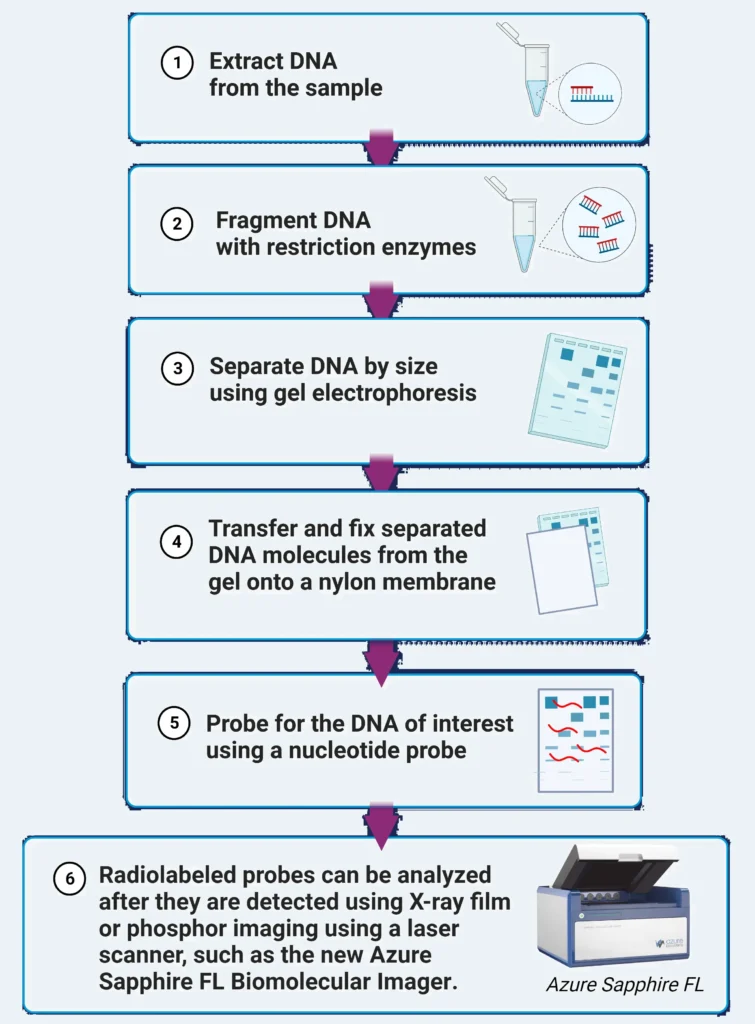
Materials and Reagents:
- Genomic DNA sample
- Restriction enzymes
- Agarose gel
- Ethidium bromide (for gel staining)
- Nitrocellulose or nylon membrane
- Denaturation solution (e.g., NaOH)
- Neutralization solution (e.g., Tris-HCl)
- DNA probe (labeled with radioactivity or fluorescence)
- Hybridization buffer
- Wash buffers
- Autoradiography film (for radioactive probes) or imaging system (for fluorescent probes)
Step-by-Step Protocol:
- DNA Digestion:
- Isolate genomic DNA from the sample.
- Digest the DNA using restriction enzymes to cut it at specific recognition sequences.
- Heat-inactivate the enzymes to stop the digestion.
- Gel Electrophoresis:
- Prepare an agarose gel with wells for loading samples.
- Load the digested DNA samples onto the gel.
- Run gel electrophoresis to separate DNA fragments by size.
- Stain the gel with ethidium bromide to visualize DNA bands under UV light.
- Denaturation:
- Soak the gel in a denaturation solution (e.g., NaOH) to denature the DNA, making it single-stranded.
- Neutralization:
- Neutralize the denaturing solution by soaking the gel in a neutralization solution (e.g., Tris-HCl) to stabilize the DNA.
- Blotting:
- Transfer the denatured DNA fragments from the gel to a nitrocellulose or nylon membrane using blotting techniques (e.g., capillary action or an electric current). The membrane should be pre-soaked in buffer to facilitate transfer.
- Hybridization:
- Prepare a labeled DNA probe that is complementary to the target DNA sequence.
- Incubate the membrane with the labeled probe in a hybridization buffer under specific conditions (temperature and time) to allow hybridization to occur. This step enables the probe to bind to the complementary target DNA on the membrane.
- Washing:
- Wash the membrane to remove any unbound or nonspecifically bound probe molecules. Multiple washes may be necessary to achieve high specificity.
- Detection:
- Visualize the presence and location of specific DNA fragments on the membrane.
- For radioactive probes, expose the membrane to X-ray film or a phosphorimager screen.
- For fluorescent probes, scan the membrane using an appropriate imaging system.
- Analysis:
- Analyze the autoradiograph or image to determine the size and presence of the target DNA sequences on the membrane.
- Documentation:
- Record and document the results for future reference and analysis.
Result Interpretation:
Interpreting the results of a Southern blotting experiment is a crucial step in understanding the presence and characteristics of specific DNA sequences in your sample. Here’s a general guide on how to interpret Southern blot results:
- Pattern on the Blot:
- Examine the pattern of DNA bands on the blot. Each band represents a DNA fragment of a particular size.
- Position of Bands:
- The position of the bands on the blot corresponds to the size of the DNA fragments. Smaller fragments travel farther during gel electrophoresis and appear higher on the blot.
- Presence or Absence of Bands:
- Determine whether the bands you expected to see are present on the blot. The presence of specific bands indicates the presence of the corresponding DNA sequences in your sample.
- Intensity of Bands:
- The intensity of the bands can provide information about the abundance of the DNA fragments. Strong, dark bands indicate a higher concentration of the DNA sequence.
- Comparison to Controls:
- Compare your sample lanes to control lanes. Control lanes may include known DNA fragments of specific sizes. This comparison helps verify the accuracy of your results.
- Probe Hybridization:
- Assess the hybridization of your labeled DNA probe with the target sequences. If the probe successfully bound to the DNA, you should observe bands corresponding to the locations of the target sequences.
- Nonspecific Binding:
- Be aware of nonspecific binding. If you see unexpected bands or smearing on the blot, it could indicate nonspecific binding of the probe to unrelated DNA sequences. Adjust the hybridization and washing conditions to reduce nonspecific binding.
- Mutation Detection:
- For mutation analysis, look for shifts or changes in band patterns compared to a control sample. Altered patterns may indicate the presence of mutations.
- Quantitative Information:
- While Southern blotting provides qualitative information about the presence of specific DNA sequences, it is not a highly quantitative technique. For accurate quantification, consider using other methods like qPCR or digital PCR.
Troubleshooting and Tips:
1. Weak or No Signal:
- Possible Causes:
- Insufficient probe labeling.
- Low target DNA concentration.
- Inadequate hybridization conditions.
- Tips:
- Ensure proper probe labeling with a sufficient amount of radioactive or fluorescent label.
- Optimize DNA extraction and purification to increase target DNA concentration.
- Check and adjust hybridization conditions (temperature, time, and stringency) for improved probe-target binding.
2. High Background Noise:
- Possible Causes:
- Non-specific probe binding.
- Inadequate washing steps.
- Tips:
- Increase washing stringency by using higher salt concentrations or detergents.
- Use blocking agents like non-fat dry milk to reduce non-specific binding.
- Optimize probe design to enhance specificity.
3. Smearing in Gel Electrophoresis:
- Possible Causes:
- DNA degradation during sample preparation.
- Overloading the gel with DNA samples.
- Tips:
- Ensure gentle handling of DNA samples to minimize degradation.
- Load appropriate amounts of DNA samples on the gel. Avoid overloading.
4. Uneven Transfer to Membrane:
- Possible Causes:
- Improper assembly of the transfer apparatus.
- Uneven wetting of the membrane.
- Tips:
- Carefully assemble the transfer apparatus according to the manufacturer’s instructions.
- Pre-wet the membrane evenly with transfer buffer before blotting.
5. Membrane Damage or Loss:
- Possible Causes:
- Fragile or low-quality membranes.
- Mishandling during transfer or hybridization.
- Tips:
- Use high-quality membranes designed for Southern blotting.
- Handle the membrane gently and avoid touching it with bare hands.
6. Inadequate DNA Denaturation or Neutralization:
- Possible Causes:
- Insufficient denaturation or neutralization times.
- Tips:
- Ensure sufficient denaturation and neutralization times according to the protocol.
7. Contamination:
- Possible Causes:
- Contaminated reagents or equipment.
- Tips:
- Use sterile techniques and disposable materials when possible.
- Regularly clean and maintain equipment.
8. Low Sensitivity:
- Possible Causes:
- Low target DNA concentration.
- Insufficient probe concentration.
- Tips:
- Optimize DNA extraction and purification to increase target DNA concentration.
- Use a higher concentration of labeled probe
Advantages and Disadvantages of Southern Blotting:
| Advantages of Southern Blotting | Disadvantages of Southern Blotting |
|---|---|
| 1. Specificity: Can detect specific DNA sequences accurately. | 1. Time-Consuming: The procedure can be lengthy and time-consuming. |
| 2. Size Determination: Allows for the estimation of DNA fragment sizes. | 2. Labor-Intensive: Requires careful handling and multiple steps. |
| 3. Gene Mapping: Essential for gene mapping and locating genes on chromosomes. | 3. Low Throughput: Not suitable for high-throughput analysis of numerous samples. |
| 4. Mutation Detection: Useful for identifying mutations and genetic variations. | 4. Radioactive Probes: Radioactive labeling poses safety and disposal concerns. |
| 5. DNA Fingerprinting: Fundamental for DNA fingerprinting in forensics. | 5. Sensitivity: May not detect low-abundance DNA sequences effectively. |
| 6. Epigenetic Studies: Can be applied to study DNA methylation patterns. | 6. Probe Design: Designing specific probes can be challenging. |
| 7. Comparative Genomics: Useful for comparing DNA samples from different sources. | 7. Limited Quantification: Provides semi-quantitative data at best. |
| 8. Historical DNA Analysis: Allows analysis of ancient DNA samples. | 8. Limited Dynamic Range: Not suitable for analyzing a wide range of DNA concentrations. |
| 9. Quality Control: Used to verify the integrity and identity of DNA samples. | 9. Advances in Alternatives: Has been partially replaced by more advanced techniques like PCR and NGS. |
It’s important to note that while Southern blotting has its advantages, it also has limitations that have led to the development and adoption of more efficient and high-throughput DNA analysis techniques in many research and diagnostic applications. Researchers often choose the method that best suits their specific needs and resources.
Limitations of Southern Blotting:
Southern blotting, while a valuable technique, has several limitations, which have led to the development and adoption of alternative methods in many applications. Here are some of the key limitations of Southern blotting:
- Time-Consuming: Southern blotting involves multiple steps, including DNA digestion, gel electrophoresis, blotting, hybridization, and detection. This process can take several days to complete, making it relatively time-consuming.
- Labor-Intensive: The technique requires careful handling and precise execution, and it can be labor-intensive, particularly when handling multiple samples.
- Low Throughput: Southern blotting is not suitable for high-throughput analysis of numerous samples simultaneously. Analyzing a large number of samples would require a significant amount of time and effort.
- Sensitivity: Southern blotting may not be highly sensitive and may not effectively detect low-abundance DNA sequences. This limitation can be problematic when analyzing samples with limited amounts of target DNA.
- Radioactive Probes: Traditionally, Southern blots use radioactive probes for detection, which pose safety concerns due to radioactivity and require special handling and disposal procedures.
- Probe Design Challenges: Designing specific probes that hybridize only with the target DNA sequence can be challenging, and probe design errors can lead to nonspecific binding.
- Semi-Quantitative Data: Southern blotting provides semi-quantitative data at best. While it can give an idea of the relative abundance of DNA fragments, it doesn’t offer precise quantification like some other methods.
- Limited Dynamic Range: Southern blotting is not well-suited for analyzing a wide range of DNA concentrations. It may not provide accurate results when dealing with samples that vary greatly in DNA content.
- Probe Length: Longer probes are typically required for Southern blotting, which may limit the detection of smaller DNA fragments or make probe design more challenging.
- Alternatives: Advances in molecular biology have led to the development of more sensitive and high-throughput techniques like polymerase chain reaction (PCR) and next-generation sequencing (NGS). These methods have largely replaced Southern blotting in many applications due to their efficiency and sensitivity.
Variations and Modern Alternatives:
Variations and modern alternatives to Southern blotting have been developed to address some of its limitations and to offer more efficient and sensitive ways to analyze DNA. Here are some notable variations and alternatives:
Variations of Southern Blotting:
- Northern Blotting: This technique is used to detect and analyze specific RNA sequences. It follows a similar procedure to Southern blotting but focuses on RNA rather than DNA.
- Western Blotting: Western blotting is used to detect specific proteins within a sample. It involves gel electrophoresis to separate proteins by size, followed by transfer to a membrane and antibody-based detection.
- Southwestern Blotting: Southwestern blotting combines DNA and protein analysis. It allows the detection of DNA-binding proteins by probing a membrane containing DNA fragments with labeled protein probes.
- Far-Western Blotting: Similar to Southwestern blotting, far-Western blotting is used to detect protein-protein interactions. It involves probing a membrane with labeled proteins to identify interacting partners.
Modern Alternatives to Southern Blotting:
- Polymerase Chain Reaction (PCR): PCR is a widely used technique for amplifying specific DNA sequences. It allows for the rapid and sensitive detection of DNA and has applications in gene identification, diagnostics, and DNA profiling (as in DNA fingerprinting).
- Quantitative PCR (qPCR): This technique extends PCR by allowing quantitative measurement of DNA or RNA in real-time. It’s highly sensitive and is used for gene expression analysis, viral load quantification, and more.
- Digital PCR (dPCR): dPCR is a precise method for quantifying DNA or RNA by partitioning samples into thousands of tiny reaction volumes, making it particularly useful for rare target detection.
- Next-Generation Sequencing (NGS): NGS technologies allow for high-throughput sequencing of entire genomes or specific DNA regions. It offers detailed insights into DNA sequences, mutations, and epigenetic modifications.
- Microarrays: DNA microarrays, also known as DNA chips, enable the simultaneous analysis of thousands of DNA sequences. They are used for gene expression profiling, mutation detection, and genotyping.
- Fluorescence In Situ Hybridization (FISH): FISH allows the visualization of specific DNA sequences in cells or tissues by hybridizing them with fluorescently labeled probes. It’s used in cytogenetics and cancer research.
- CRISPR-Cas9 Technology: CRISPR-Cas9 enables precise genome editing by targeting specific DNA sequences for modification. It has applications in gene knockout, gene therapy, and functional genomics.
- Nanopore Sequencing: This innovative sequencing technology analyzes DNA by threading it through a nanopore. It offers real-time, long-read sequencing capabilities.
- Methylation-Specific PCR (MSP): MSP is used to analyze DNA methylation patterns. It involves PCR amplification of bisulfite-treated DNA to distinguish between methylated and unmethylated DNA.
Comparison of Southern Blotting with Modern Techniques:
| Aspect | Southern Blotting | PCR (Polymerase Chain Reaction) | Next-Generation Sequencing (NGS) | Microarrays |
|---|---|---|---|---|
| Target Molecule | DNA | DNA | DNA, RNA | DNA |
| Purpose | Detect and analyze specific DNA sequences | Amplify specific DNA segments | Sequence entire genomes or specific regions | Analyze gene expression, mutations |
| Speed | Time-consuming (days) | Rapid (hours) | Varies (hours to days) | Moderate (hours) |
| Sensitivity | Moderate to low | High | High | High |
| Quantitative Analysis | Semi-quantitative | Quantitative | Quantitative | Quantitative |
| Throughput | Low (limited samples) | High (multiple samples) | High (multiple samples) | High (multiple samples) |
| Probe or Primer Design | Can be challenging | Requires specific primers/probes | Primers and adaptors needed | Requires microarray probes |
| Labor-Intensive | Yes | No | Yes | Yes |
| Detection | Autoradiography, imaging (radioactive probes) | Gel electrophoresis, fluorescence | Fluorescence, sequencing by synthesis | Fluorescence |
| Applications | Gene mapping, mutation detection, DNA fingerprinting | Gene expression analysis, genotyping, mutation detection | Whole-genome sequencing, transcriptomics, epigenetics | Gene expression profiling, genotyping |
| Safety Concerns | Radioactive probes | Minimal | Bioinformatics analysis | Bioinformatics analysis |
| Usage in Forensics | Yes (DNA fingerprinting) | No | No | No |
| Cost | Moderate to high | Moderate | High | Moderate to high |
| Genome-Wide Analysis | No | No | Yes | Yes |
This table provides a comparative overview of some key aspects of Southern blotting and modern techniques like PCR, NGS, and microarrays. The choice of method depends on the specific research or diagnostic goals, sample size, required sensitivity, and available resources.
FAQs:
1. What is Southern blotting used for?
- Southern blotting is used to detect and analyze specific DNA sequences in a sample. It has applications in gene mapping, mutation detection, DNA fingerprinting, and other genetic analyses.
2. Who developed the Southern blotting technique?
- Southern blotting was developed by Edwin Southern in the 1970s, and it is named after him.
3. What is the difference between Southern blotting and Northern blotting?
- Southern blotting detects DNA sequences, while Northern blotting is used to detect RNA sequences. Both techniques follow a similar procedure but focus on different nucleic acids.
4. How does Southern blotting work?
- Southern blotting involves DNA digestion, gel electrophoresis, transfer of DNA fragments to a membrane, hybridization with a labeled DNA probe, washing, and detection to visualize specific DNA sequences.
5. What is a DNA probe in Southern blotting?
- A DNA probe is a single-stranded DNA molecule that is complementary to the target DNA sequence being analyzed. It is typically labeled with radioactivity or fluorescence for detection.
6. What are the limitations of Southern blotting?
- Limitations of Southern blotting include its time-consuming nature, low throughput, and the use of radioactive probes, which pose safety and disposal concerns.
7. What are the modern alternatives to Southern blotting?
- Modern alternatives to Southern blotting include PCR (Polymerase Chain Reaction), qPCR (Quantitative PCR), NGS (Next-Generation Sequencing), and microarrays, among others, which offer greater speed, sensitivity, and throughput.
8. Is Southern blotting still commonly used in research today?
- While Southern blotting is still used in specific research and diagnostic contexts, it has been partially replaced by more advanced and high-throughput techniques in many applications.
9. Can Southern blotting be used for diagnosing genetic disorders?
- Yes, Southern blotting can be used to detect specific DNA mutations associated with genetic disorders, making it a valuable tool in diagnostic genetics.
10. What is the significance of Southern blotting in genetic research?
- Southern blotting played a pivotal role in gene mapping, mutation analysis, and understanding DNA sequences, contributing significantly to the field of molecular genetics.
Conclusion:
In conclusion, Southern blotting is a foundational molecular biology technique that has made substantial contributions to the field of genetics and DNA analysis. Developed by Edwin Southern in the 1970s, this method allows scientists to detect and study specific DNA sequences within complex genomic samples. Through a series of steps, including DNA digestion, gel electrophoresis, transfer to a membrane, hybridization with a labeled DNA probe, and detection, researchers can precisely locate and analyze genes, mutations, and other genetic elements.
Despite its historical significance and continued relevance in specific applications, Southern blotting does have limitations, including being time-consuming, low-throughput, and reliant on radioactive probes. As a result, modern alternatives and variations, such as PCR, NGS, and microarrays, have gained prominence due to their greater speed, sensitivity, and scalability.
Home | Blog | About Us | Contact Us | Disclaimer
Possible References Used




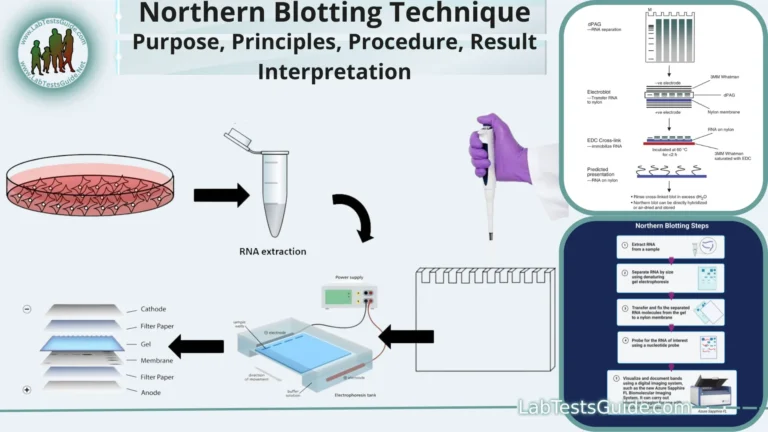
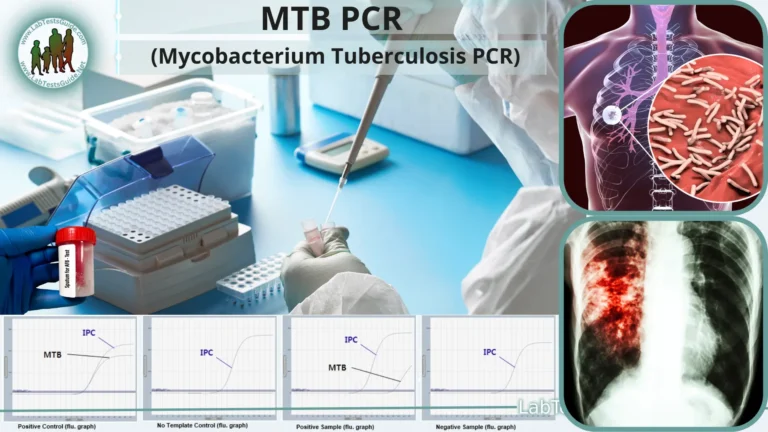
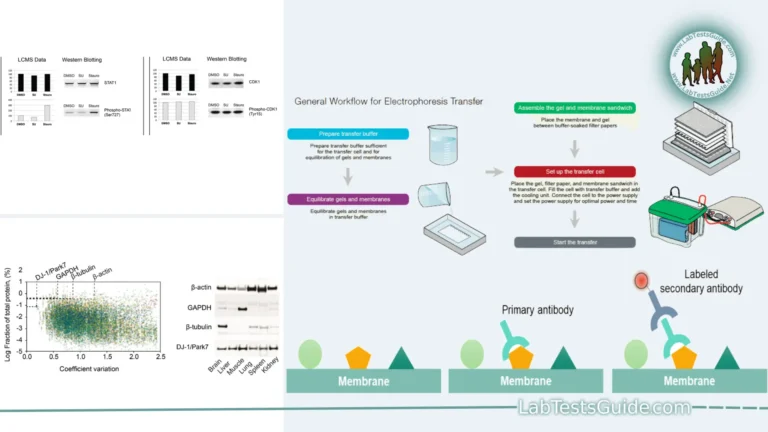
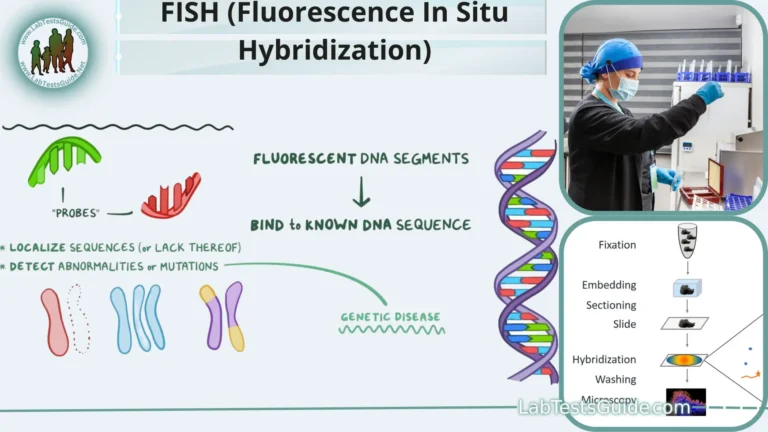
2 Comments